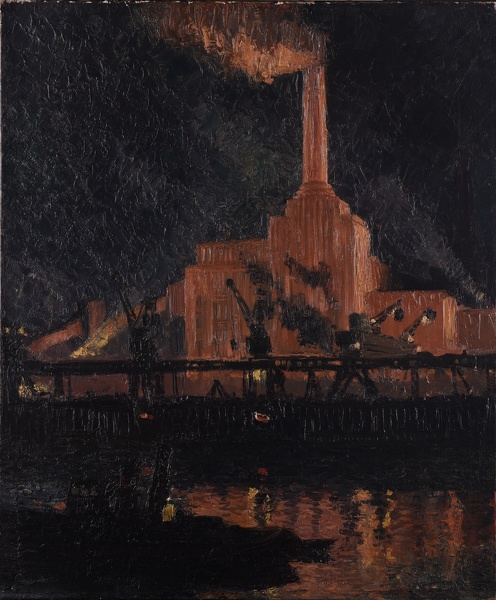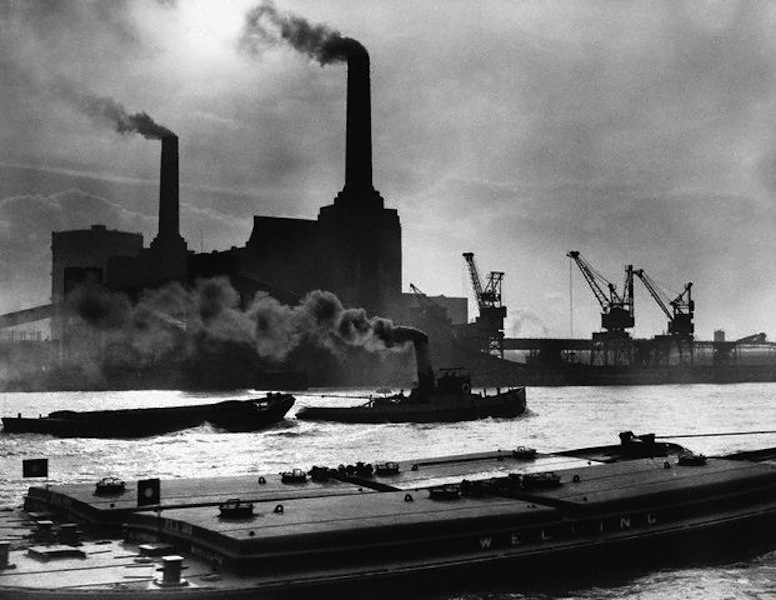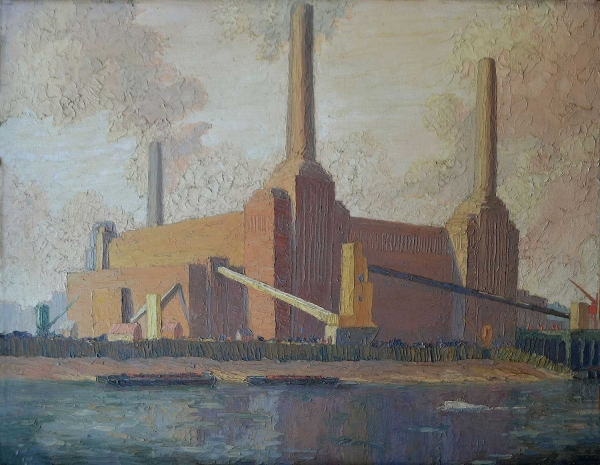
Battersea Power Station, (west half)
Framed (ref: 7467)
Tags: Charles Johnson oil industrial World War II Paintings by British Artists

Tags: Charles Johnson oil industrial World War II Paintings by British Artists
Provenance: The artists Harold Riley; thence by descent
Literature: WW2 - War Pictures by British Artists, Edited by Sacha Llewellyn & Paul Liss, July 2016, cat 115, page 157.
Battersea Power Station was conceived in two stages. The west half was constructed between 1929 and 1935.

Battersea power station in 1934, with the first phase operational
The Power Station was a prime target for enemy bombers during WW2 but survived the war, in-spite of some near misses and a serious fire, relatively unscathed. After the war the east half was added (completed in 1955) giving the Battersea Power Station its distinctive silhouette with four colossal chimney stacks (recorded in a daylight painting by Johnson).

Until the late 1930s electricity was supplied by municipal undertakings (small power companies that built power stations dedicated to a single industry or group of factories, and sold any excess electricity to the public). These companies used widely differing standards of voltage and frequency. In 1925 Parliament decided that the power grid should be a single system with uniform standards and under public ownership. Several of the private power companies reacted to the proposal by forming the London Power Company which proposed building a small number of very large stations. The London Power Company's first of these super power stations was planned for the Battersea area, on the south bank of the Thames. The proposal was made in 1927, for a station built in two stages and capable of generating 400 megawatts (MW) of electricity when complete. The site chosen was a 15-acre (61,000 m2) plot of land the site of a former reservoir, chosen for its proximity to the River Thames for cooling water and coal delivery. The proposal sparked protests from those who felt that the building would be too large and would be an eyesore, as well as worries about the pollution damaging local buildings, parks and even paintings in the nearby Tate Gallery. The company addressed the former concern by hiring Sir Giles Gilbert Scott to design the building's exterior. He was a noted architect and industrial designer, famous for his design of the red telephone box. He would go on to design another London power station, Bankside, which now houses Tate Modern. Construction of the first phase, the A Station, began in March 1929. The building of the steel frame began in October 1930. Once completed, the construction of the brick cladding began, in March 1931.
We are grateful to Michael Barker and Adrian Pett (Darnley Fine Art) for assistance.